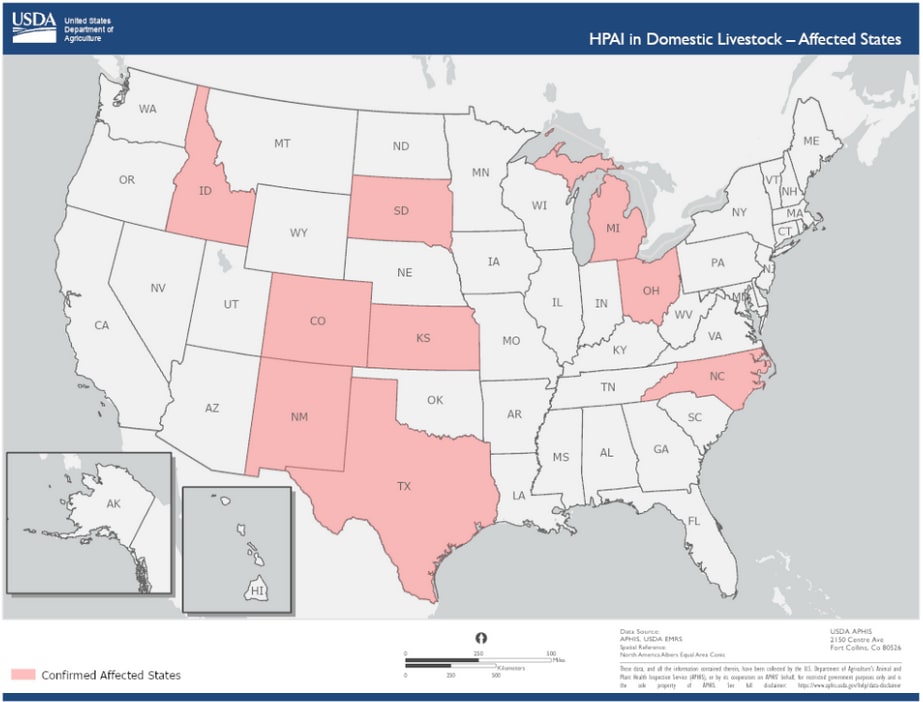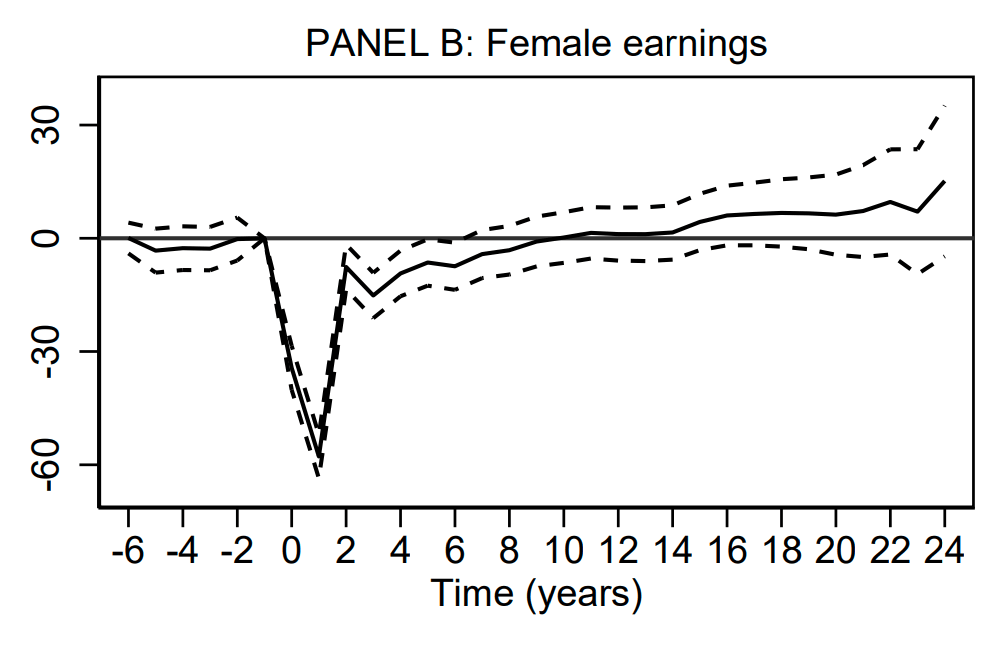Posts
Wiki Contributions
Comments
Also, there's now a second detected human case, this one in Michigan instead of Texas.
Both had a surprising-to-me "pinkeye" symptom profile. Weird!
The dairy worker in Michigan had various "compartments" tested and their nasal compartment (and people they lived with) were all negative. Hopeful?
Apparently and also hopefully this virus is NOT freakishly good at infecting humans and also weirdly many other animals (like covid was with human ACE2, in precisely the ways people have talked about when discussing gain-of-function in years prior to covid).
If we're being foolishly mechanical in our inferences "n=2 with 2 survivors" could get rule of succession treatment. In that case we pseudocount 1 for each category of interest (hence if n=0 we say 50% survival chance based on nothing but pseudocounts), and now we have 3 survivors (2 real) versus 1 dead (0 real) and guess that the worst the mortality rate here would be maybe 1/4 == 25% (?? (as an ass number)), which is pleasantly lower than overall observed base rates for avian flu mortality in humans! :-)
Naive impressions: a natural virus, with pretty clear reservoirs (first birds and now dairy cows), on the maybe slightly less bad side of "potentially killing millions of people"?
I haven't heard anything about sequencing yet (hopefully in a BSL4 (or homebrew BSL5, even though official BSL5s don't exist yet), but presumably they might not bother to treat this as super dangerous by default until they verify that it is positively safe) but I also haven't personally looked for sequencing work on this new thing.
When people did very dangerous Gain-of-Function research with a cousin of this, in ferrets, over 10 year ago (causing a great uproar among some) the supporters argued that it was was worth creating especially horrible diseases on purpose in labs in order to see the details, like a bunch of geeks who would Be As Gods And Know Good From Evil... and they confirmed back then that a handful of mutations separated "what we should properly fear" from "stuff that was ambient".
Four amino acid substitutions in the host receptor-binding protein hemagglutinin, and one in the polymerase complex protein basic polymerase 2, were consistently present in airborne-transmitted viruses. (same source)
It seems silly to ignore this, and let that hilariously imprudent research of old go to waste? :-)
The transmissible viruses were sensitive to the antiviral drug oseltamivir and reacted well with antisera raised against H5 influenza vaccine strains. (still the same source)

(Image sauce.)
Since some random scientists playing with equipment bought using taxpayer money already took the crazy risks back then, it would be silly to now ignore the information they bought so dearly (with such large and negative EV) back then <3
To be clear, that drug worked against something that might not even be the same thing.
All biological STEM stuff is a crapshoot. Lots and lots of stamp-collecting. Lots of guess and check. Lots of "the closest example we think we know might work like X" reasoning. Biological systems or techniques can do almost anything physically possible eventually, but each incremental improvement in repeatability (going from having to try 10 million times to get something to happen to having to try 1 million times (or going from having to try 8 times on average to 4 times on average) due to "progress" ) is kinda "as difficult as the previous increment in progress that made things an order of magnitude more repeatable".
The new flu just went from 1 to 2. I hope it never gets to 4.
As of May 16, 2024 an easily findable USDA/CDC report says that widely dispersed cow herds are being detectably infected.

So far, that I can find reports of, only one human dairy worker has been detected as having an eye infection.
I saw a link to a report on twitter from an enterprising journalist who claimed to have gotten some milk directly from small local farms in Texas, and the first lab she tried refuse to test it. They asked the farms. The farms said no. The labs were happy to go with this!
So, the data I've been able to get so far is consistent with many possibly real worlds.
The worst plausible world would involve a jump to humans, undetected for quite a while, allowing time for adaptive evolution, and an "influenza normal" attack rate of 5% -10% for adults and ~30% for kids, and an "avian flu plausible" mortality rate of 56%(??) (but maybe not until this winter when cold weather causes lots of enclosed air sharing?) which implies that by June of 2025 maybe half a billion people (~= 7B*0.12*0.56) will be dead???
But probably not, for a variety of reasons.
However, I sure hope that the (half imaginary?) Administrators who would hypothetically exist in some bureaucracy somewhere (if there was a benevolent and competent government) have noticed that paying two or three people $100k each to make lots of phone calls and do real math (and check each other's math) and invoke various kinds of legal authority to track down the real facts and ensure that nothing that bad happens is a no-brainer in terms of EV.
I see it. If you try to always start with a digit, then always follow with a decimal place, then the rest implies measurement precision, and the mantissa lets you ensure a dot after the first digit <3
The most amusing exceptional case I could think of: "0.1e1" :-D
This would be like "I was trying to count penguins by eyeball in the distance against the glare of snow and maybe it was a big one, or two huddled together, or maybe it was just a weirdly shaped rock... it could have been a count of 0 or 1 or 2."
There is a bit of a tradeoff if the notation aims to transmit the idea of measurement error.
I would read "700e6" as saying that there were three digits of presumed accuracy in the measurement, and "50e3" as claiming only two digits of confidence in the precision.
If I knew that both were actually a measurement with a mere one part in ten of accuracy, and I was going to bodge the numeric representation for verbal convenience like this, it would give my soul a twinge of pain.
Also, if I'm gonna bodge my symbols to show how sloppy I'm being, like in text, I'd probably write 50k and 700M (pronounced "fifty kay" and "seven hundred million" respectively).
Then I'd generally expect people to expect me to be so sloppy with this that it doesn't even matter (like I haven't looked it up, to be precise about anything) if I meant to point to 5*10^3 or 5*2^10. In practice I would have meant roughly "both or either of these and I can't be arsed to check right now, we're just talking and not making spreadsheets or writing code or cutting material yet".
Something that has always seemed a bit weird to me is that it seems like economists normally assume (or seem to assume from a distance) that laborers "live to make money (at work)" rather than that they "work to have enough money (to live)".
Microeconomically, especially for parents I think this is not true.
You'd naively expect, for most things, that if the price goes down, the supply goes down.
But for the labor of someone with a family, if the price given for their labor goes down in isolation, then they work MORE (hunt for overtime, get a second job, whatever) because they need to make enough to hit their earning goals in order to pay for the thing they need to protect: their family. (Things that really cause them to work more: a kid needs braces. Thing that causes them to work less: a financial windfall.)

Looking at that line, the thing it looks like to me is "the opportunity cost is REAL" but then also, later, the amount of money that had to be earned went up too (because of "another mouth to feed and clothe and provide status goods for and so on"). Maybe?
The mechanistic hypothesis here (that parents work to be able to hit spending targets which must rise as family size goes up) implies a bunch of additional details: (1) the husband's earnings should be tracked as well and the thing that will most cleanly go up is the sum of their earnings, (2) if a couple randomly has and keeps twins then the sum of the earnings should go up more.
Something I don't know how to handle is that (here I reach back into fuzzy memories and might be trivially wrong from trivially misremembering) prior to ~1980 having kids caused marriages to be more stable (maybe "staying together for the kids"?), and afterwards it caused marriages to be more likely to end in divorce (maybe "more kids, more financial stress, more divorce"?) and if either of those effects apply (or both, depending on the stress reactions and family values of the couple?) then it would entangle with the data on their combined earnings?
Scanning the paper for whether or how they tracked this lead me to this bit (emphasis not in original), which gave me a small groan and then a cynical chuckle and various secondary thoughts...
As opposed to the fall in female earnings, however, we see no dip in male earnings. Instead, both groups of men continue to closely track each other’s earnings in the years following the first IVF treatment as if nothing has happened. Towards the end of the study period, the male earnings for both groups fall, which we attribute to the rising share of retired men.
(NOTE: this ~falsifies the prediction I made a mere 3 paragraphs ago, but I'm leaving that in, rather than editing it out to hide my small local surprise.)
If I'm looking for a hypothetical framing that isn't "uncomplimentary towards fathers" then maybe that could be spun as the idea that men are simply ALWAYS "doing their utmost at their careers" (like economists might predict, with a normal labor supply curve) and they don't have any of that mama bear energy where they have "goals they will satisfice if easy or kill themselves or others to achieve if hard" the way women might when the objective goal is the wellbeing of their kids?
Second order thoughts: I wonder if economists and anthropologists could collaborate here, to get a theory of "family economics" modulo varying cultural expectations?
I've heard of lots of anthropological stuff about how men and women in Africa believe that farming certain crops is "for men" or "for women" and then they execute these cultural expectations without any apparent microeconomic sensitivity (although the net upshot is sort of a reasonable portfolio that insures families against droughts).
Also, I've heard that on a "calorie in, calorie out" basis in hunter-gatherer cultures, it is the grandmothers who are the huge breadwinners (catch lots of rabbits with traps, and generally forage super efficiently) whereas the men hunt big game (which they and the grandmas know is actually inefficient, if an anthropologist asks this awkward question) so that, when the men (rarely) succeed in a hunt they can throw a big BBQ for the whole band and maybe get some nookie in the party's aftermath.
It seems like it would be an interesting thing to read a paper about: "how and where the weirdly adaptive foraging and family economic cultures" even COME FROM.
My working model is that it is mostly just "monkey see, monkey do" on local role models, with re-calibration cycle times of roughly 0.5-2 generations. I remember writing a comment about mimetic economic learning in the past... and the search engine says it was for Unconscious Economics :-)
This is pretty cool. I think the fact that the cost is so low is almost a bit worrying. Because of reading this article, I'm likely to hum in the future due to "the potential non-trivial benefits compared to probably minuscule side effects and very low costs".
In some sense you've just made this my default operating hypothesis (and hence in some sense "an idea I give life to" or "enliven", and hence in some sense "a 'belief' of mine") not because I think it is true, but simply because it kinda makes sense and generalized prudence suggests that it probably won't hurt to try.
But also: I'm pretty sure this broader meta-cognitive pattern explains a LOT of superstitious behavior! ;-)
The other posting is here, if you're trying to get a full count of attendees based on the two posts for this one event.
I think I'll be there and will bring a guest or three and will bring some basic potluck/picnic food :-)
I feel like you're saying "safety research" when the examples of what corporations centrally want is "reliable control over their slaves"... that is to say, they want "alignment" and "corrigibility" research.
This has been my central beef for a long time.
Eliezer's old Friendliness proposals were at least AIMED at the right thing (a morally praiseworthy vision of humanistic flourishing) and CEV is more explicitly trying for something like this, again, in a way that mostly just tweaks the specification (because Eliezer stopped believing that his earliest plans would "do what they said on the tin they were aimed at" and started over).
If an academic is working on AI, and they aren't working on Friendliness, and aren't working on CEV, and it isn't "alignment to benevolence " or making "corrigibly seeking humanistic flourishing for all"... I don't understand why it deserves applause lights.
(EDITED TO ADD: exploring the links more, I see "benevolent game theory, algorithmic foundations of human rights" as topics you raise. This stuff seems good! Maybe this is the stuff you're trying to sneak into getting more eyeballs via some rhetorical strategy that makes sense in your target audience?)
"The alignment problem" (without extra qualifications) is an academic framing that could easily fit in a grant proposal by an academic researcher to get funding from a slave company to make better slaves. "Alignment IS capabilities research".
Similarly, there's a very easy way to be "safe" from skynet: don't built skynet!
I wouldn't call a gymnastics curriculum that focused on doing flips while you pick up pennies in front of a bulldozer "learning to be safe". Similarly, here, it seems like there's some insane culture somewhere that you're speaking to whose words are just systematically confused (or intentionally confusing).
Can you explain why you're even bothering to use the euphemism of "Safety" Research? How does it ever get off the ground of "the words being used denote what naive people would think those words mean" in any way that ever gets past "research on how to put an end to all AI capabilities research in general, by all state actors, and all corporations, and everyone (until such time as non-safety research, aimed at actually good outcomes (instead of just marginally less bad outcomes from current AI) has clearly succeeding as a more important and better and more funding worthy target)"? What does "Safety Research" even mean if it isn't inclusive of safety from the largest potential risks?